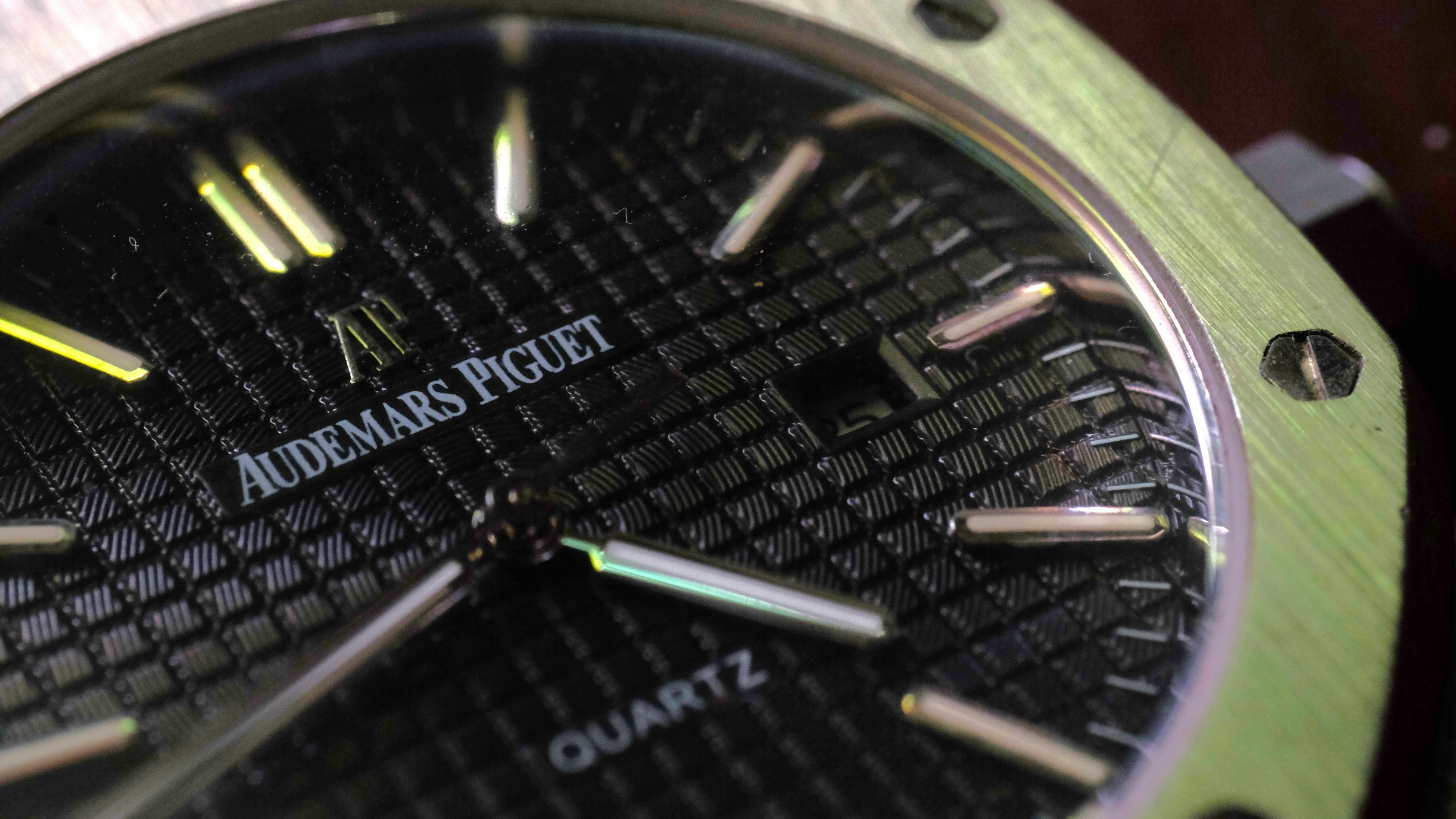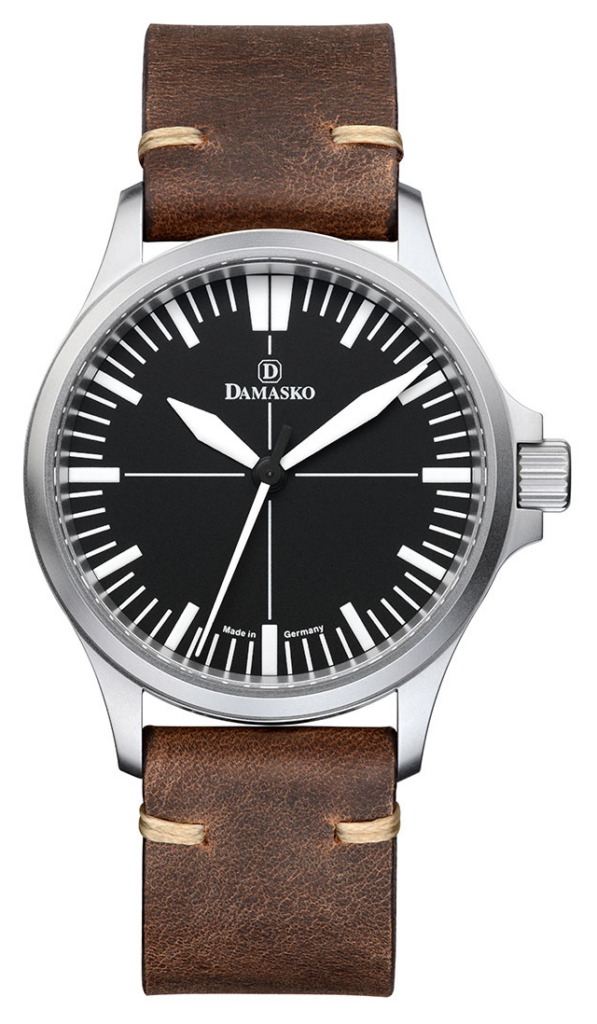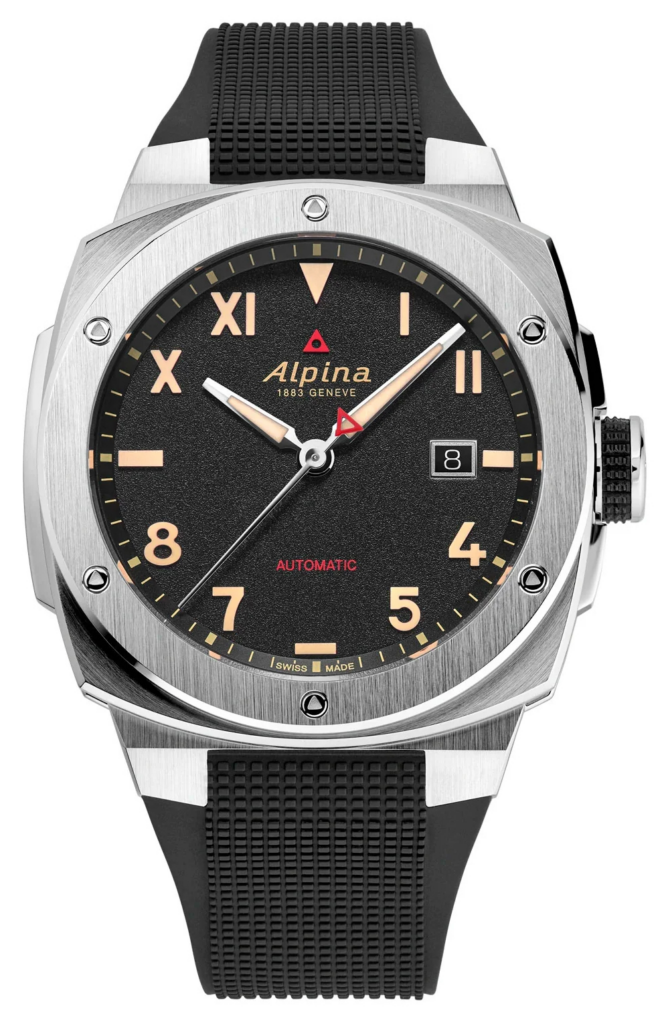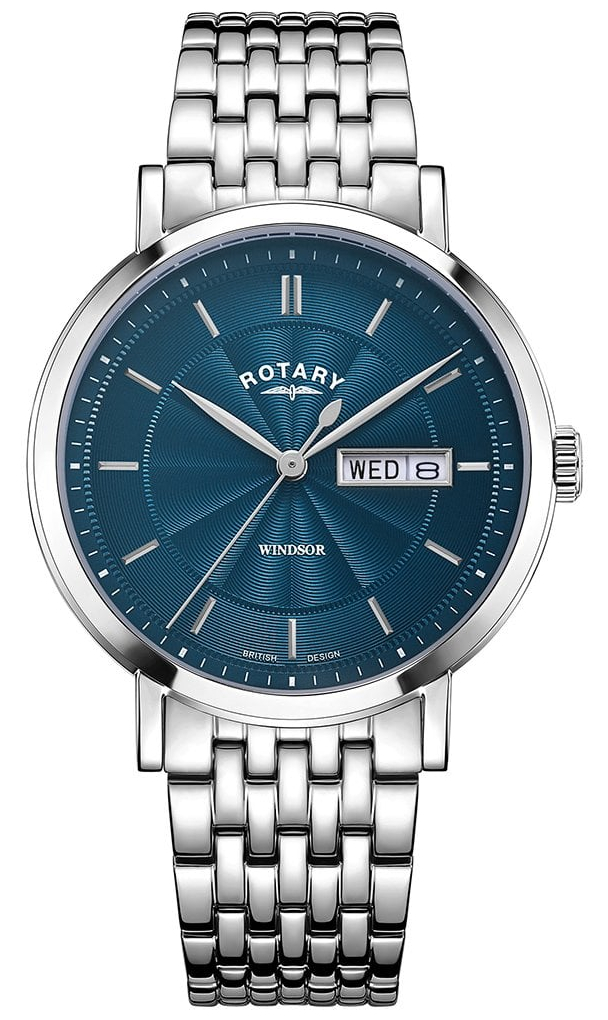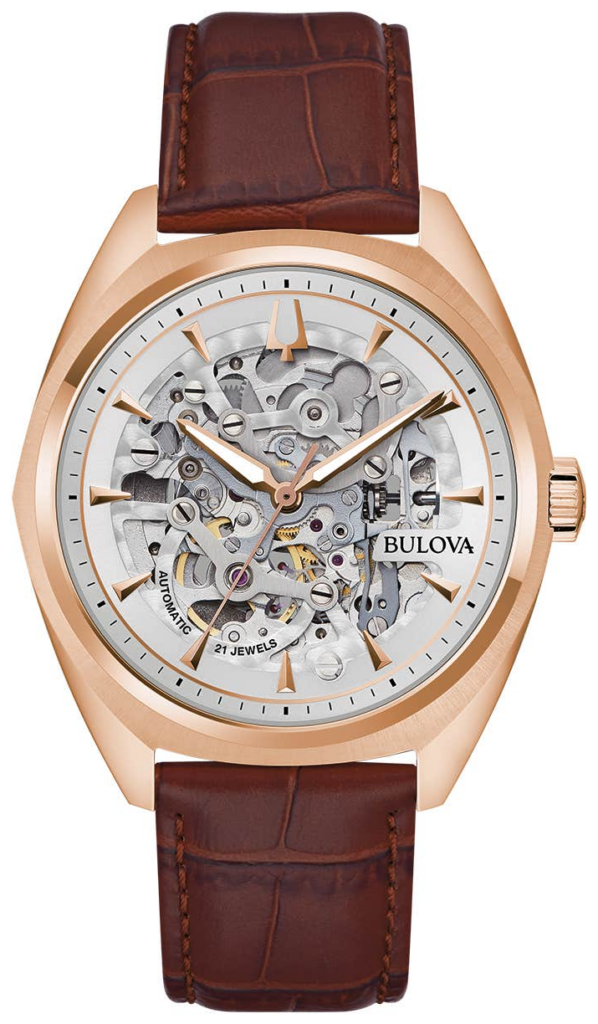When it comes to choosing the perfect watch, the dial plays a significant role in defining its style, functionality and overall aesthetic. From minimalist designs to intricate complications, watch dials come in a variety of types; each serving different purposes and tastes. Whether you appreciate the simplicity of a crosshair dial, or the boldness of a skeleton dial, understanding these types can help you find your perfect watch. In this ‘Watches 101: Types of Watch Dial’ blog, we’ll explore the key types of dials and what makes each one unique. As well as this, we’ll recommend a watch that uses each type. So read on for more!
Watches 101: Types of Watch Dial
Analogue, digital and dual are the most well-known watch dial types. However, there are so many more! The unique types like guilloche or crosshair often get looked over because many do not know what they entail. So today, we will break down some of the more unusual and intricate types for you. Who knows, maybe after reading this, you’ll be a watch dial pro!
Crosshair Dials
Adding a vintage and classic look to any watch, crosshair dials feature thin lines intersecting in the centre of the dial. These lines typically extend from the centre to the edge of the dial, dividing it into four quadrants. The crosshair design is often subtle and can be purely decorative or serve a functional purpose by singing the readability of the time; especially on watches with minimal or no indices. As a whole, the crosshair dial is often associated with a clean, understated elegance. Hence, it is a popular choice for those who appreciate a vintage-inspired watch design.
Our Crosshair Dial Pick: Damasko DK30 Three-Hand Manufacture Automatic (39mm) Black Dial / Vintage Mocha Leather Strap DK30 VINTAGE MOCHA LEATHER
Understatement can be so versatile, and this model showcases that perfectly. Simple yet sophisticated, the black crosshair dial features white baton indices and large white sword hands with special luminescent paint. A flat sapphire crystal, with an anti-reflective coating on both sides, frames the dial. Surrounding this is a surface-hardened and bead-blasted submarine steel case, with a fixed bezel and screwed case back. The case measures 39mm in diameter, so it will fit a majority of wrists; highlighting the versatile appeal of Damasko watches. An A26-1 automatic Elaborè movement with bidirectional pawl winding powers this timepiece. Its 42-hour power reserve, and 200 metres of water resistance, ensure it is both a practical and suitable choice for everyday wear. A vintage mocha leather strap secures the watch to the wrist. Not only does the strap provide great comfort, but it complements the retro look of the crosshair dial perfectly.
California Dials
A unique and distinctive dial type, California dial designs often feature a combination of Roman numerals on the top half of the dial and Arabic numerals on the bottom half. The remaining positions are typically marked by simple indices or symbols, such as a triangle at the 12 o’clock position. And more often than not, the 3,6, and 9 o’clock positions are marked with horizontal lines or dots. The California dial is often found on vintage military and dive watches, giving them a distinctive and collectable appeal. Both functional and stylish, this dial type offers a playful nod to historical watchmaking.
Our California Dial Pick: Alpina Alpiner Extreme Automatic California (41mm) Black Textured Dial / Black Rubber Strap AL-525BB4AE6
While staying true to the original design of the 1933 Alpiner timepiece, this model impresses with its modern technologies. In true California style, the black sandblasted dial features a mix of applied beige-coloured baton indices, Arabic numerals and Roman numerals; each of which features a white luminous treatment. In addition to this, a date aperture features at the 3 o’clock position. To ensure optimal readability, the polished silver hour and minute hands are filled with beige luminous treatment. An anti-reflective sapphire crystal protects all of this, so the durability and clarity levels of the watch are both excellent. Measuring 41mm in diameter, a brushed and polished stainless steel case frames the dial. Within this lies the watch’s AL-525 automatic movement; this can also be viewed through the exhibition case back. A textured black rubber strap concludes the design of this California dial watch.
Guilloché Dials
A guilloché dial is a type of watch dial that features intricate, repetitive patterns engraved into its surface. These patterns are created using a traditional technique known as guilloché, which is a highly labour-intensive process that requires great skill. Each intricate pattern is carefully engraved, and the quality of the work can greatly enhance the overall visual appeal of the watch. The guilloché dial remains a symbol of fine watchmaking and is highly valued by collectors and enthusiasts for its beauty and the craftsmanship it represents. It continues to be a popular choice for those seeking a timepiece with a classic, elegant aesthetic.
Our Guilloché Dial Pick: Rotary Windsor Quartz Stainless Steel Bracelet Blue Dial GB05420/05
A dress watch through and through, this Rotary oozes elegance. Its deep blue dial features a guilloché pattern along with radial and outer dial stitching. As well as this, the dial features applied baton indices, leaf-shaped hands and a date/day aperture at the 3 o’clock position. The guilloché pattern on the dial catches and reflects light in a unique way; creating a dynamic, shimmering effect that changes with the angle of light and movement of the watch. An expertly crafted stainless steel case, with sapphire glass, frames the dial. Measuring 37mm in diameter, it lends the watch a classic look on the watch; greatly complementing formal attire as it does so. Within this case lies the watch’s high-quality quartz movement. Reliable and precise, it ensures accurate timekeeping. A 7-link tapered stainless steel bracelet and deployment clasp conclude the design of this timepiece.
Skeleton Dials
The skeleton dial design showcases the intricate mechanics of the watch, including the balance wheel, mainspring, escapement, and gear trains. This feature appeals to those who appreciate the art and engineering behind watchmaking. The term ‘skeleton’ refers to the fact that much of the watch’s material is stripped away, revealing the ‘skeleton’ or core components of the movement. The exposed parts of the movement are often decorated with techniques like engraving, perlage or Côtes de Genève to enhance the visual appeal. Talking of visual appeal, to maintain visibility of the movement, skeleton dials often have minimal or unobtrusive hour markers. The transparency and complexity of a skeleton dial offer a blend of aesthetic beauty and mechanical fascination.
Our Skeleton Dial Pick: Bulova Men’s Surveyor (41mm) Silver Skeleton Dial / Brown Leather Strap 97A175
This Bulova model offers modern elegance and luxurious craftsmanship at an affordable price. Its stand-out feature, of course, is the skeletonised dial; offering the wearer a stunning display of the automatic movement, which features a 42-hour power reserve. Surrounding the dial is a silver-white chapter ring with rose gold-tone applied baton indices. And for a complementary look, the dial also features matching angular hands with luminescent fill. Measuring 41mm in diameter, a rose gold-tone stainless steel case, with brushed and polished accents, frames the dial. Alongside this is a domed mineral crystal, which offers not only great clarity but durability too. As previously mentioned, the automatic movement that powers this timepiece can be viewed through the dial, and for an added touch, it can also be viewed through the exhibition case back. A refined brown leather strap concludes the design of this stylish, sophisticated and skeletonised timepiece.
Stone Dials
As its name suggests, a stone dial is a type of dial that is made from a thin slice of natural stone or mineral. This material is used instead of traditional materials such as metal or enamel. Stone dials are prized for their unique and luxurious appearance. And due to the natural variants in the stone, each dial will have its own distinct pattern, colouration and texture. While there is a broad variety of stones that can be transformed into a watch dial, the most known types are mother-of-pearl, lapis lazuli and malachite. These dials add a distinctive and often luxurious touch to the timepiece, making them popular among collectors and those looking for a unique accessory.
Our Stone Dial Pick: Thomas Sabo | Glam And Soul | Women’s Garden Spirit | Malachite Gold WA0365-264-211-33
Gorgeous and green, the genuine malachite stone with its unique texture is the highlight of this timepiece. The precision hand-fitted genuine stone disc serves as a dial, whose natural, vitalising green tones fascinate with every incidence of light and make each model unique. To ensure the wearer’s, and those onlookers’, attention remains on the stunning stone, the features on the dial are simple. The gold-tone hour and minute hands are complemented by an off-centre small second hand. In addition, the crown, which aids the 50-metre water resistance rating, features a small malachite stone. For optimal protection and clarity, mineral crystal glass, with a sapphire coating, encases the dial. Measuring 33mm in diameter, a gold-tone stainless steel case, with a graphic structure on its side, frames the dial. This graphic structure continues onto the gold-tone Milanese mesh bracelet that concludes the design of this timepiece.
These dials, each with their distinct look and feel, are often used to complement the overall design and purpose of the watch. From rugged sports models to sophisticated dress watches, there is a dial that matches every occasion. And after reading this short guide, we hope you now have the confidence to know which dial is the right type for you!
What are your thoughts on our ‘Watches 101: Types of Watch Dial’ guide? Which dial type is your favourite? Let us know in the comments below!

